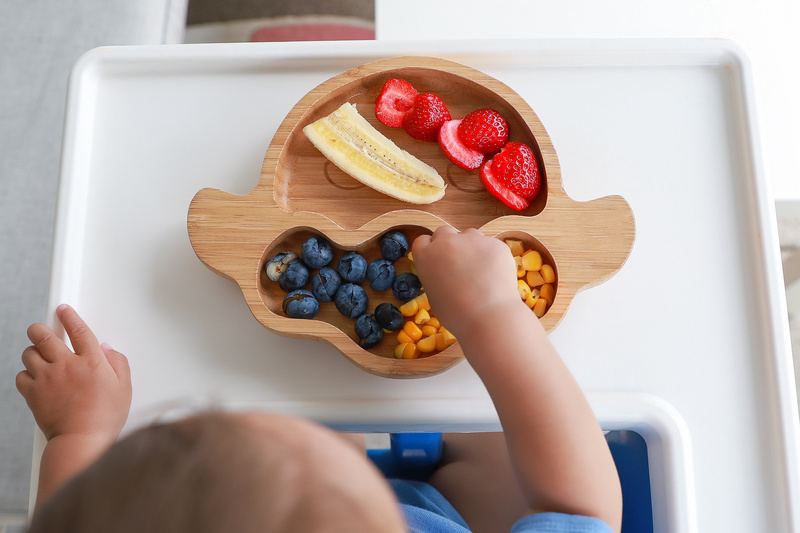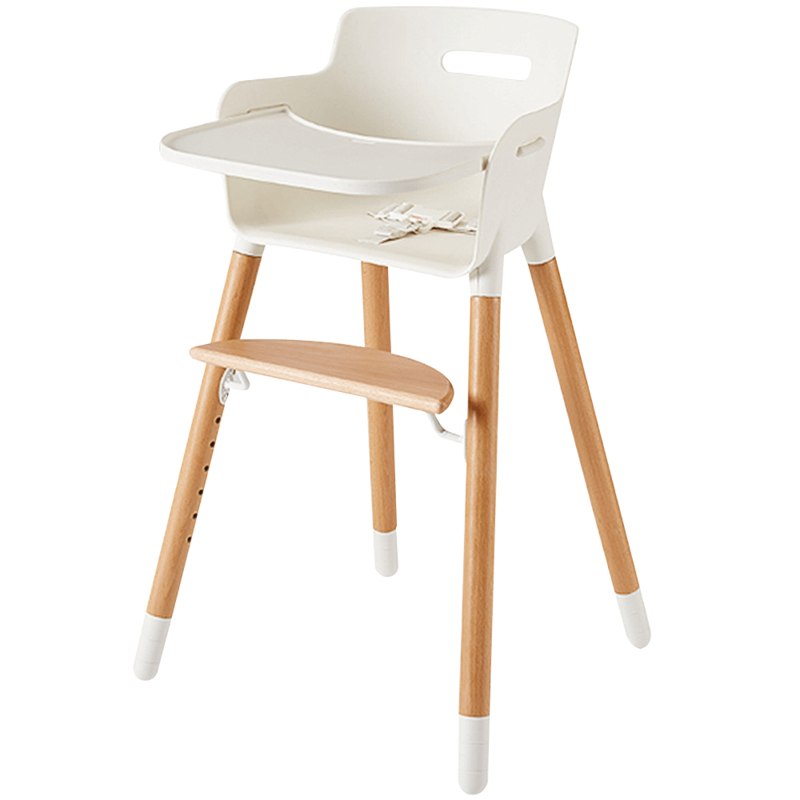
As your baby grows, you may start wondering when it’s time to transition them out of a high chair. While there’s no set age or formula for this, there are things that signal you that your little one’s is ready for the next stage.
In this blog post, Ashtonbee will discuss the topic of transitioning from a high chair to a regular one and provide some tips and guidance to help you make this critical decision.
Why Transition Out of a High Chair?
High chairs are designed for babies who are just starting to eat solid foods and cannot sit up unassisted. They provide a safe and secure place for your baby to sit while they eat, and they can be adjusted to accommodate your baby’s changing size and needs. Before we dive into when to transition out of a high chair, it’s essential to understand why it’s necessary.
However, as your child develops independence, they may feel confined and restricted in their high chair. They may want to sit at the table with the rest of the family, or they may want to move around and explore their surroundings. This is when it’s time to transition them out of the high chair.

Signs Your Child Is Ready To Transition Out of a High Chair
So, how do you know when your child is ready to move on from their high chair? Here are some signs to look out for.
They Can Sit Up Unassisted
One of the main reasons for using a high chair is to support your baby while they learn to sit up. Once your child can sit up on their own without any assistance, they may no longer need the support of a high chair.
They Can Reach the Table
If your child is starting to show an interest in what’s happening at the table, they’re showing you signs that they’re ready to sit at the table with the rest of the family. They may no longer need a high chair if they can comfortably reach the table and sit on a regular chair without assistance.
They’re Becoming More Independent
As your child becomes more independent, they may want to explore their surroundings and move around more freely. If they’re starting to show signs of restlessness or frustration while sitting in the high chair, it may signify they’re ready for the next stage in their development.
They’re Getting Too Big for the High Chair
Finally, if your child is getting too big for their high chair and they’re starting to feel cramped and uncomfortable, it’s probably time to start thinking about transitioning them to a table high chair or, if they’re ready, a regular chair.
When Is a Child Too Old for a High Chair?
Generally, a child is considered too old for a high chair once they reach the age of around five to eight years old. At this age, most children can sit comfortably and safely in a regular chair at the table without the need for additional support or restraints provided by a high chair.
The specific age to outgrow a high chair may vary depending on their unique developmental pace and their size. The range given is a benchmark parents can use to estimate when their child should outgrow the high chair and move on to a regular one.
Concerns About Transitioning From a High Chair to a Regular One
Transitioning to a regular chair is a significant milestone for both children and parents. While it marks a moment of growth and development, it also comes with concerns and challenges. Here are the usual ones.
Safety Concerns
High chairs are designed to keep children safe and secure while they eat, but there are still risks associated with their use. Your child might remove the food tray, and they may fall out of the chair, or the chair itself may tip over if not used properly.
To improve stability and help prevent falls, your child needs to be held down on the chair. So be sure to select a high chair with a comfortable safety strap. If you can, go for a high chair with a five point harness for maximum stability. These safety harnesses are adjustable and can adapt to your child’s comfort. This ensures they remain calm and steady while on the chair.
Comfort and Fit
High chairs come in various designs and dimensions, and the options are broad for parents to find one comfortable for their child to sit in. If the chair is oversized or too small, it can cause discomfort or make it difficult for the child to reach their food.
Consider getting a high chair design recommended for most children, particularly ages 1 up to 7 years old. The sizing difference will be very slight. Be sure also to get one with a safety harness so that any minor difference in chair sizing and comfort can be offset by strapping your child in the high chair.
Adjustment Period
It may take some time for the child to get used to sitting in a high chair, especially if they are used to sitting in a different chair or on someone’s lap while they eat. The caregiver may need to help the child feel comfortable and secure in the new chair.
The ultimate goal is to have your kid sit on a regular chair when eating at the dinner table. So to help with this transition, you’ll need to buy a high chair with adjustable height. You can get them used to sitting in a high chair first, then adjust the height down as they get comfortable.
Gradually, you can introduce them to a child-sized table and chair and, eventually, the dining table using an adult chair.
Behavioral Issues
Some children may resist sitting in a high chair or become fussy during mealtime. This could be due to various reasons, such as feeling hungry or tired or simply not being interested in eating at that moment.
If this is the case, keep the high chair empty for a while and put them in a crib or a playpen. You have to gauge their mood and give them the comfort they need until they’re ready and receptive enough to sit on a high chair for a proper meal.
Cleaning and Maintenance
High chairs can get messy quickly, and cleaning them every after use is a must to keep them safe against bacteria and germs that may harm your child. This can take time and require additional effort from the caregiver.
To resolve this concern, it’s important to select a waterproof, easy-to-clean high chair for a baby. Materials such as hypoallergenic and non-toxic plastics are available and are the best ones for easy cleaning.

Transitioning to a Regular Chair
Once you know it’s time to transition your child out of their high chair, you have several options to consider to make the gradual change.
Booster Seats
A booster seat is a seat that can be placed on top of a regular adult chair to provide a boost for your child. Booster seats come in various styles and sizes, and they’re designed to fit different age ranges and weight limits.
Wooden High Chairs
Wooden high chairs are a popular option you can choose over plastic high chairs. They’re sturdy, durable, and can be adjusted to accommodate your child’s changing size and needs. Wooden high chairs also have a classic look that many parents prefer over plastic options.
Regular Dining Chairs
Finally, if you have a big kid old enough to sit on a regular dining chair without assistance, this is the final option. Make sure to choose a chair that’s the right size for your child and provides sufficient support and stability.
Sitting Comfortably Towards Growth
Your child’s transition to a regular chair and dining table will be pleasant if you give them comfort and safety. Doing this will encourage them to develop their autonomy faster because they’re comfortable enough to explore.
If you want to be a knowledgeable parent while taking good care of your child, go and explore our website. If you’re curious about what an excellent high chair looks like and its features, you can check out our collection of baby essentials here.



